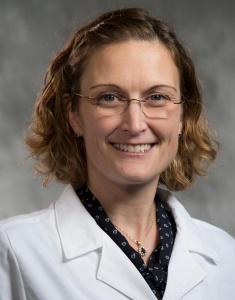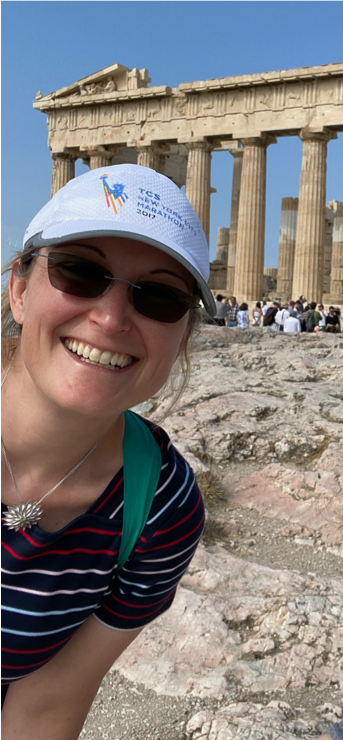
Vascular neurologists use the saying “time is brain” when referring to the urgent need for prompt stroke treatment. Neuro-ophthalmologist Chantal Boisvert, MD, OD, who co-founded Duke’s Eye Stroke clinic last year, has a corollary that refers to sudden vision loss: “time is vision.” In this week’s Spotlight interview, Boisvert talks to us about her work as Chief of the Neuro-Ophthalmology Division of the Ophthalmology Department and her clinical work helping patients who have had eye strokes. She also talks about the advances in care she’s seen since she became a neuro-ophthalmologist and enjoying gardening, traveling, and time with family when she’s not at Duke.
What are your current responsibilities within the Neurology and Ophthalmology Department? What does your typical day look like?
I am the Chief of the Neuro-Ophthalmology Division of the Ophthalmology Department. I see patients in clinic three days a week. In a typical clinic day, I usually see between 20 and 25 patients. One day a week, I am either in clinic doing procedures (injections or temporal artery biopsies) or in the OR doing surgeries (mostly strabismus surgeries). Wednesday is my administrative day, where I schedule most of my meetings. When possible, I try to give my lectures on my administrative days or early morning before the clinic starts.
What interests you the most about neuro-ophthalmology, and how did you get involved in the field?
I really enjoy the challenging mix and variety of cases that we see in neuro-ophthalmology. There is no routine day for us in neuro-ophthalmology as there is always an interesting patient to learn from. I started developing an interest in the field when I was working as a pediatric ophthalmologist and soon realized that most of the cases I really enjoyed ended up being neuro-related!
Along with Brian Mac Grory, MB BCh, MRCP, you helped found the Duke Eye Stroke Clinic last year. How is that Clinic proceeding, and what changes or growth will the Clinic go through in the next year?
In this clinic, we see patients that need follow-up eye stroke care. Our role is to ensure that all the risk factors for a future stroke are under control and to prevent complications that can affect their eyes and vision after a stroke. We also work in close collaboration with our low vision rehab specialists to help patients adjust to their condition and to discuss equipment and devices to make daily life easier.
Since its implantation, the clinic has demonstrated continuous growth. Our hope is to continue to expand over the next couple of years.
What’s the biggest change you’ve noticed in the field of neuro-ophthalmology since you earned your medical degree?
The past decade has led to the development of gene therapy for the treatment of Leber Hereditary Optic Neuropathy (LHON), which we hope will be a game changer in the treatment of this blinding condition. Teprotumumab was FDA-approved as the first treatment of thyroid eye disease in January 2020, which has tremendously changed our approach with this disease. In the past, the only options were steroids or surgery once the disease had stabilized. Now, we can actually treat the cause of thyroid eye disease, not just the symptoms.
There are also many new treatments for multiple sclerosis and seropositive neuromyelitis optica that did not exist when I was a fellow.
What’s the most exciting development (or potential development) you see coming in the next decade?
That’s a very good question. There is nothing in the pipeline for the treatment of ischemic optic neuropathy (that I am aware of), but I really hope that we will eventually find a cure for this common condition. So many patients lose their vision from ischemic optic neuropathy and no treatments can be offered.
What’s one thing you wished more people dealing with sudden vision loss (and their loved ones) knew?
We absolutely have to continue our public campaigns to increase awareness of vision loss as a sign of stroke. Patients with vision loss should immediately go to the nearest Emergency Department to improve their chance of vision recovery and to also be evaluated for a cerebral stroke. When it comes to a stroke, we say “time is brain.” With an eye stroke, we can also add that “time is vision.” Every minute counts.
What other passions or hobbies do you have outside of the Department?
I really enjoy traveling and discovering new cultures. When I am home, I like spending time with my family and my 2 dogs (Willow and Aspen). Since moving to North Carolina, I have also developed a growing interest in gardening (there is nothing better than fresh vegetables directly from the garden!).
